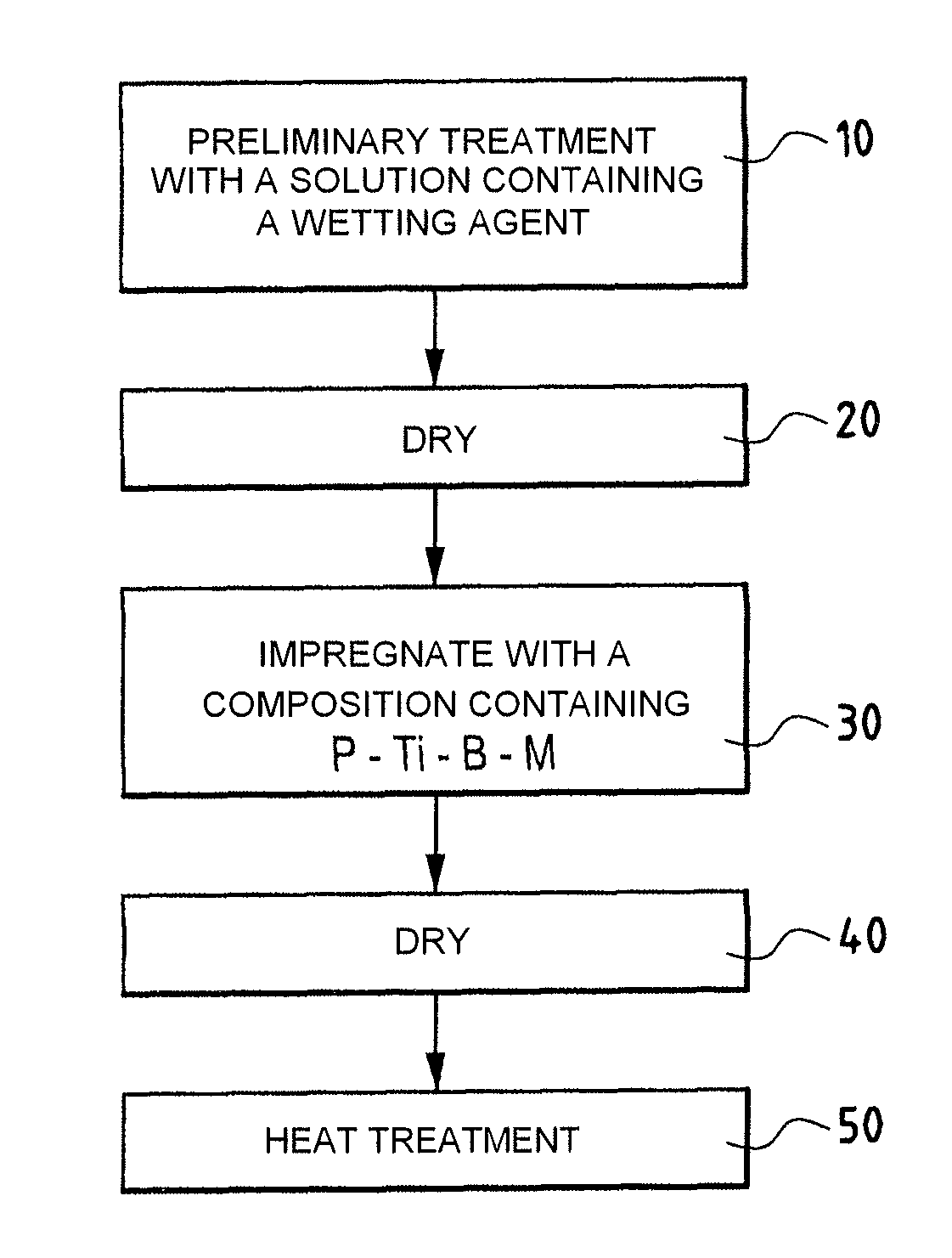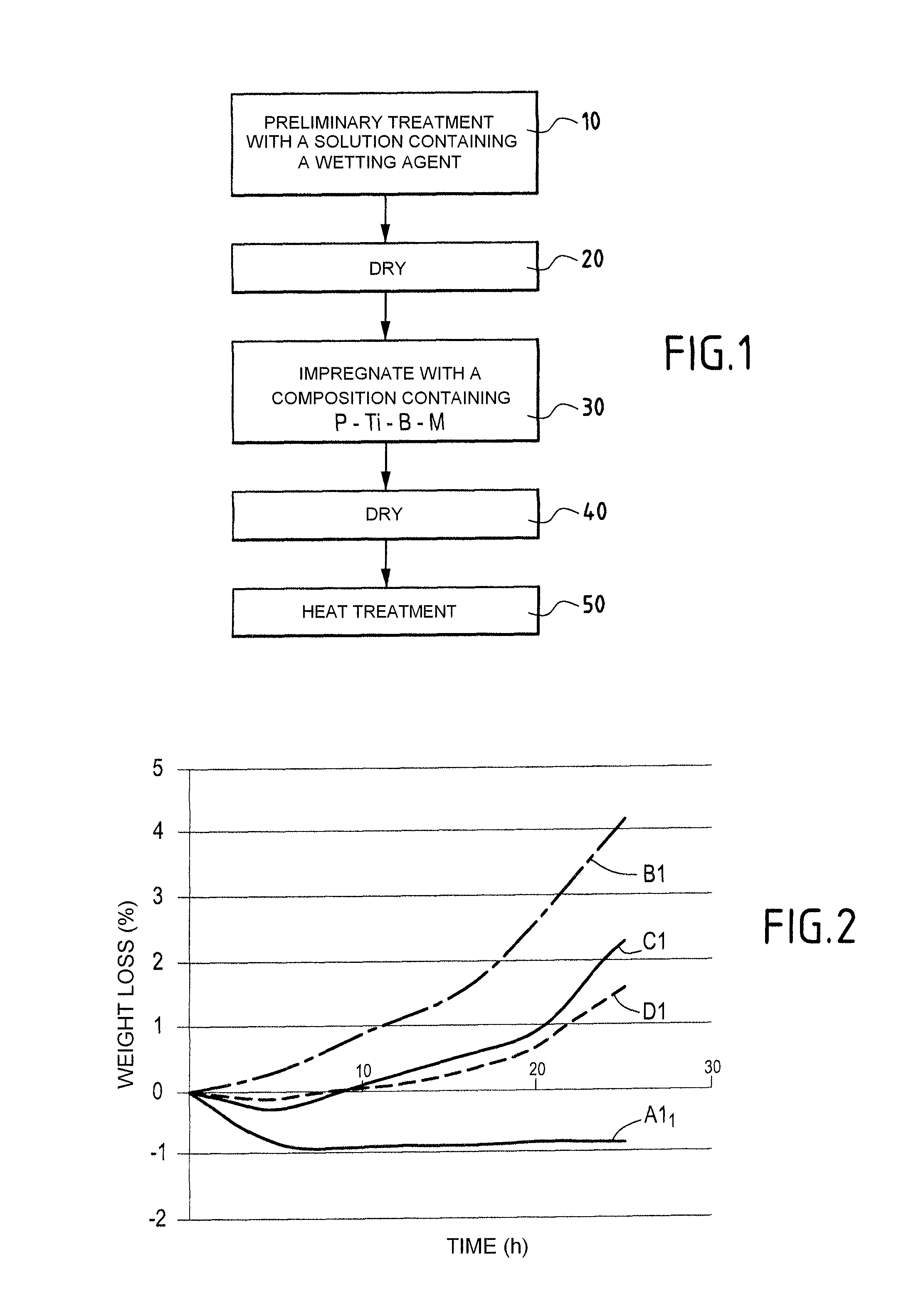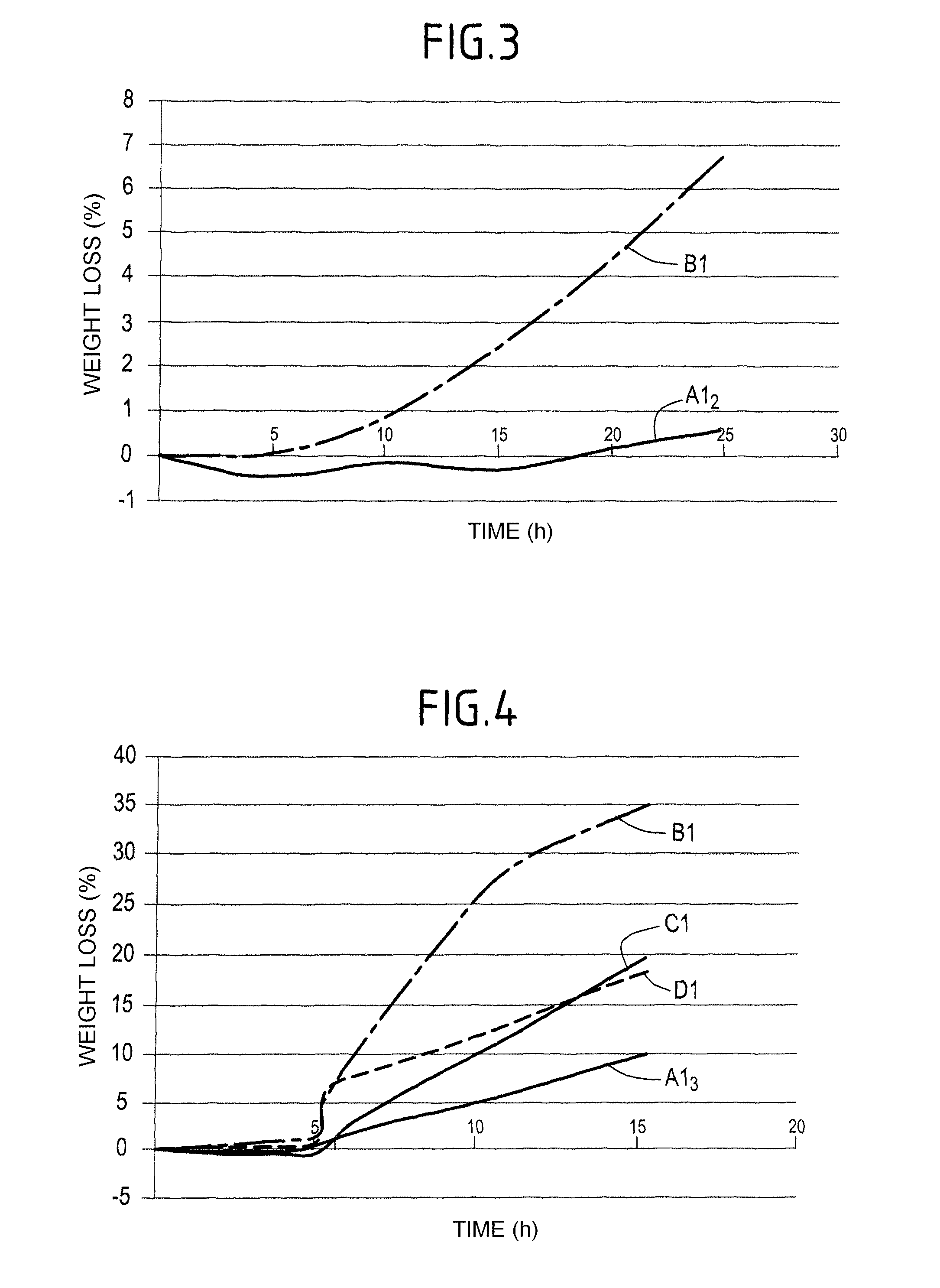Protection Against the Oxidation of Composite Materials Containing Carbon
a technology of composite materials and carbon, which is applied in the direction of friction linings, mechanical equipment, coatings, etc., can solve the problems of complex protection against oxidation, limited effectiveness of such compositions, and problems in terms of safety and environment, and achieves easy implementation and effective protection against oxidation
- Summary
- Abstract
- Description
- Claims
- Application Information
AI Technical Summary
Benefits of technology
Problems solved by technology
Method used
Image
Examples
example 1
[0062]Samples of C / C composite material were made as follows.
[0063]Unidirectional fiber sheets of carbon precursor fibers (preoxidized polyacrylonitrile) were superposed in various directions and bonded together by needling progressively as they were being superposed. The fiber preform obtained in that way was subjected to heat treatment to transform the precursor into carbon by pyrolysis, and was then densified with a pyrolytic carbon matrix by means of chemical vapor infiltration. Such a method is itself well known. Reference can be made in particular to document U.S. Pat. No. 4,790,052. Samples were cut from the resulting block of C / C material.
[0064]A plurality of samples were provided with protection against oxidation by a process comprising the following steps:
[0065]a) preliminary treatment of the samples by immersion in an ultrasound vessel containing an aqueous solution of a surface active agent based on polyethoxyl isononyl-phenol as available from the German supplier Hüls u...
examples 2 to 5
[0085]Samples A1 to A5 were obtained by proceeding as for the samples A1 of Example 1, but adding after drying step c), a heat treatment step by raising the temperature up to 700° C. in a manner similar to step d1), and for samples A3 to A5, by replacing the 5.1% by weight of KH2PO4 in the impregnation composition with the same percentage by weight respectively of sodium dihydrogen phosphate NaH2PO4, sodium chloride NaCl, and magnesium chloride MgCl2.
[0086]The curves of FIG. 6 show the results obtained (relative weight loss) for samples A2 to A5 when subjected to test I).
[0087]It can be seen that the performance of samples A2 to A5 is similar, and in comparison with the performance of samples A1 (FIG. 2) and A2, that heat treatment up to 700° C. does not provide any improvement.
example 6
[0088]A sample A6 was obtained by proceeding as for sample A1, but while increasing the proportion by weight of titanium powder in the impregnation composition which then contained: 29% by weight of Al(H2PO4)3; 23.3% by weight of titanium powder; 14% by weight of boron powder; 4.7% by weight of KH2PO4; and 29% by weight water.
[0089]FIG. 7 shows the results obtained (relative weight losses) for samples A1 to A6 subjected to test III). FIG. 7 also shows the results obtained for a sample A5.
[0090]Comparing the results obtained with samples A1 and A6 shows a degradation in performance as a result of increasing the relative proportion of titanium.
[0091]Comparing the results obtained with samples A1 and A5 shows much better behavior in the presence of a compound of the potassium of sample A1 provided with protection initially incorporating a P—O—Ti—K association in comparison with the sample A5 provided with protection originally incorporating a P—O—Ti—Mg association, it being plausible t...
PUM
| Property | Measurement | Unit |
|---|---|---|
| Temperature | aaaaa | aaaaa |
| Temperature | aaaaa | aaaaa |
| Fraction | aaaaa | aaaaa |
Abstract
Description
Claims
Application Information
 Login to View More
Login to View More - R&D
- Intellectual Property
- Life Sciences
- Materials
- Tech Scout
- Unparalleled Data Quality
- Higher Quality Content
- 60% Fewer Hallucinations
Browse by: Latest US Patents, China's latest patents, Technical Efficacy Thesaurus, Application Domain, Technology Topic, Popular Technical Reports.
© 2025 PatSnap. All rights reserved.Legal|Privacy policy|Modern Slavery Act Transparency Statement|Sitemap|About US| Contact US: help@patsnap.com



